Global HRM Report: Strategies for MNC Success and Growth
VerifiedAdded on 2023/04/06
|6
|1034
|472
Report
AI Summary
This report delves into the crucial role of global human resource management (HRM) within multinational corporations (MNCs), focusing on strategic alignment and operational excellence. It examines the challenges and opportunities associated with expanding into global markets, such as the opening of stores in China, and the need for efficient global HRM policies. The report explores key HRM processes, including recruitment, selection, and training, emphasizing the importance of adapting to local regulations and cultural nuances. It also discusses cost considerations, the significance of recruiting the right candidates, and the implementation of employee exchange programs to enhance skills and motivation. Furthermore, the report highlights the role of HRM in creating a sustainable value chain, fostering employee satisfaction, and ensuring the achievement of organizational goals through strategic planning and visionary leadership. The report concludes that a well-structured and preplanned global HRM strategy supported by efficient and visionary management and leadership will significantly contribute towards the achievement of organizational goal towards sustainable operation on most cost and time efficient manner for the long run.
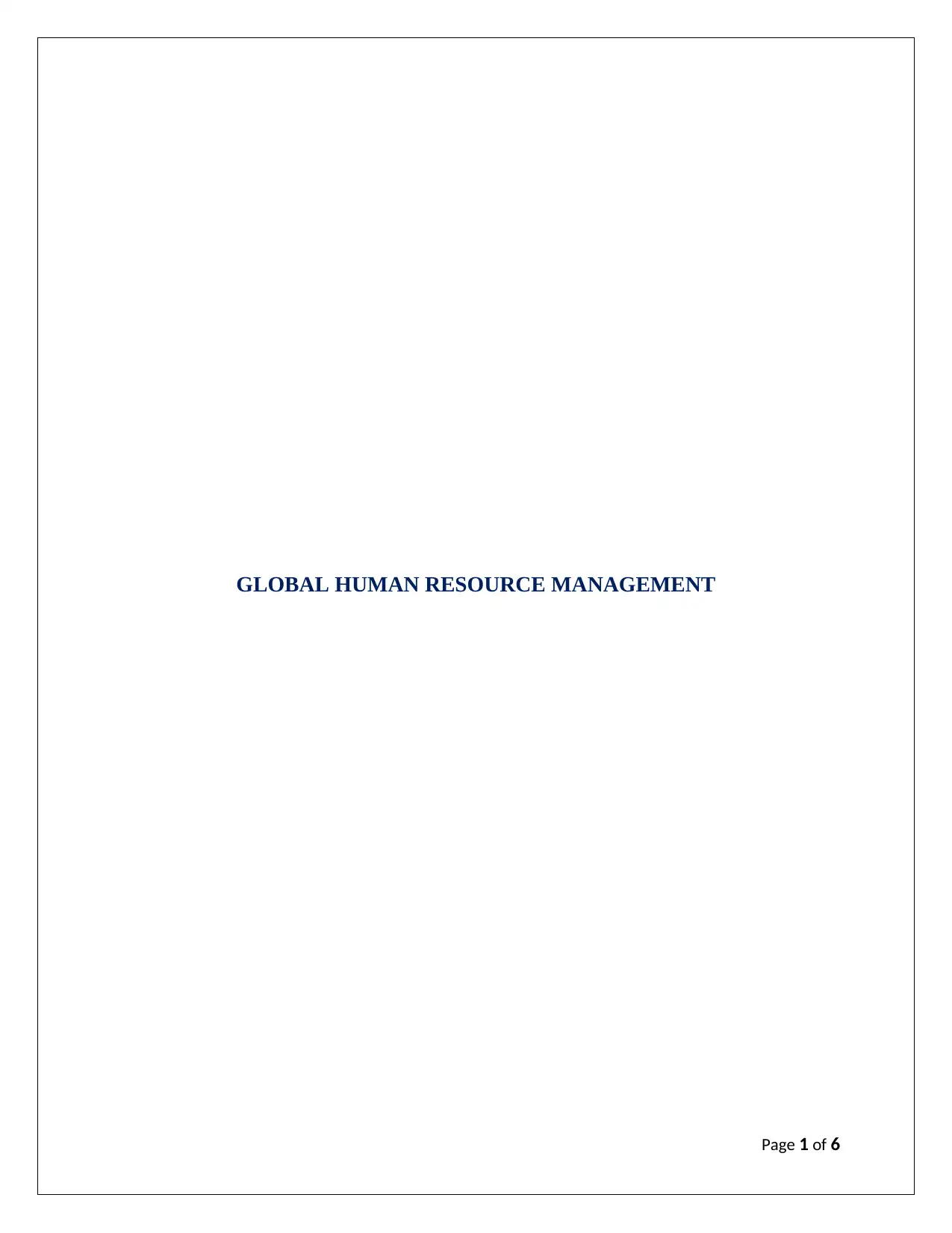
GLOBAL HUMAN RESOURCE MANAGEMENT
Page 1 of 6
Page 1 of 6
Paraphrase This Document
Need a fresh take? Get an instant paraphrase of this document with our AI Paraphraser
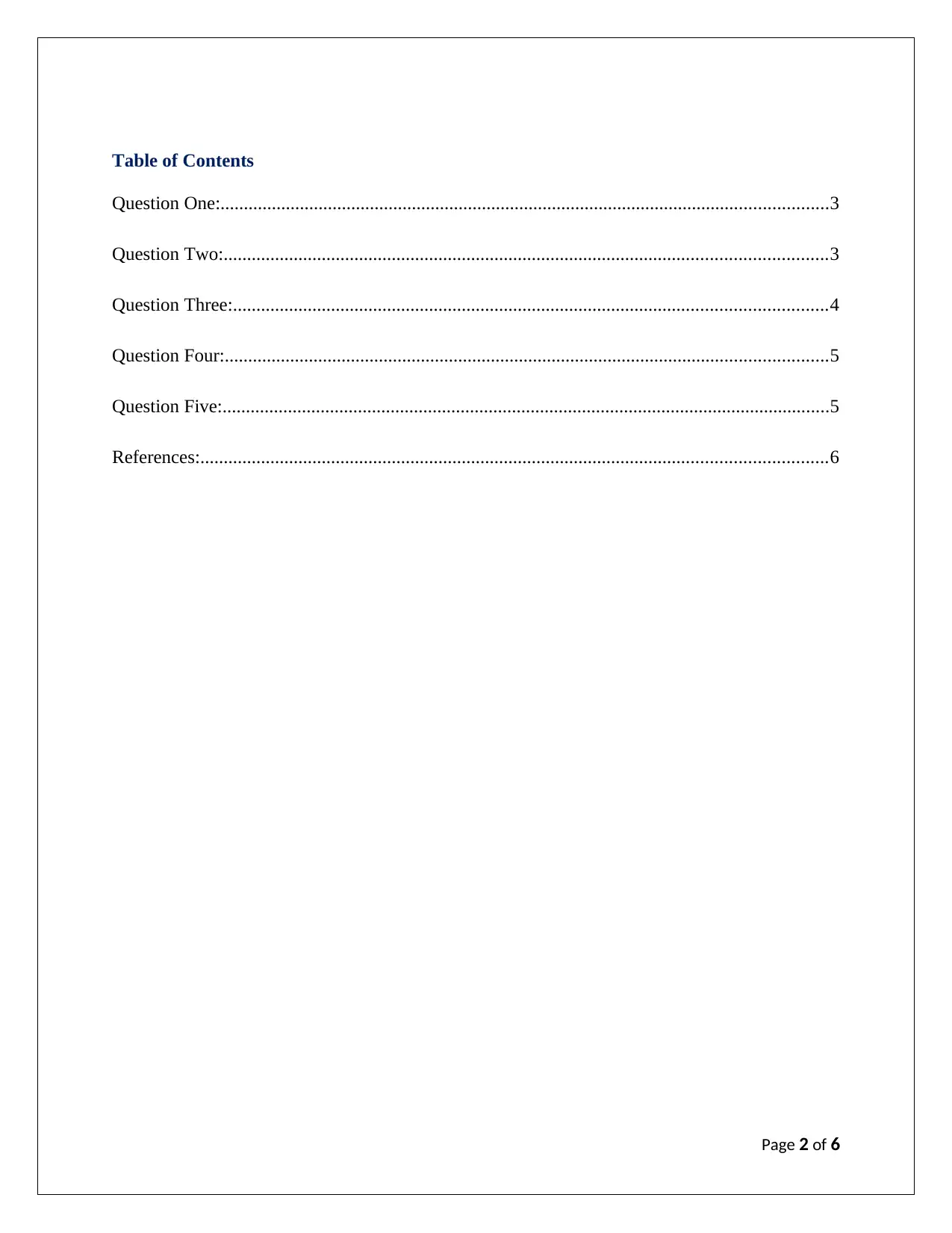
Table of Contents
Question One:..................................................................................................................................3
Question Two:.................................................................................................................................3
Question Three:...............................................................................................................................4
Question Four:.................................................................................................................................5
Question Five:..................................................................................................................................5
References:......................................................................................................................................6
Page 2 of 6
Question One:..................................................................................................................................3
Question Two:.................................................................................................................................3
Question Three:...............................................................................................................................4
Question Four:.................................................................................................................................5
Question Five:..................................................................................................................................5
References:......................................................................................................................................6
Page 2 of 6
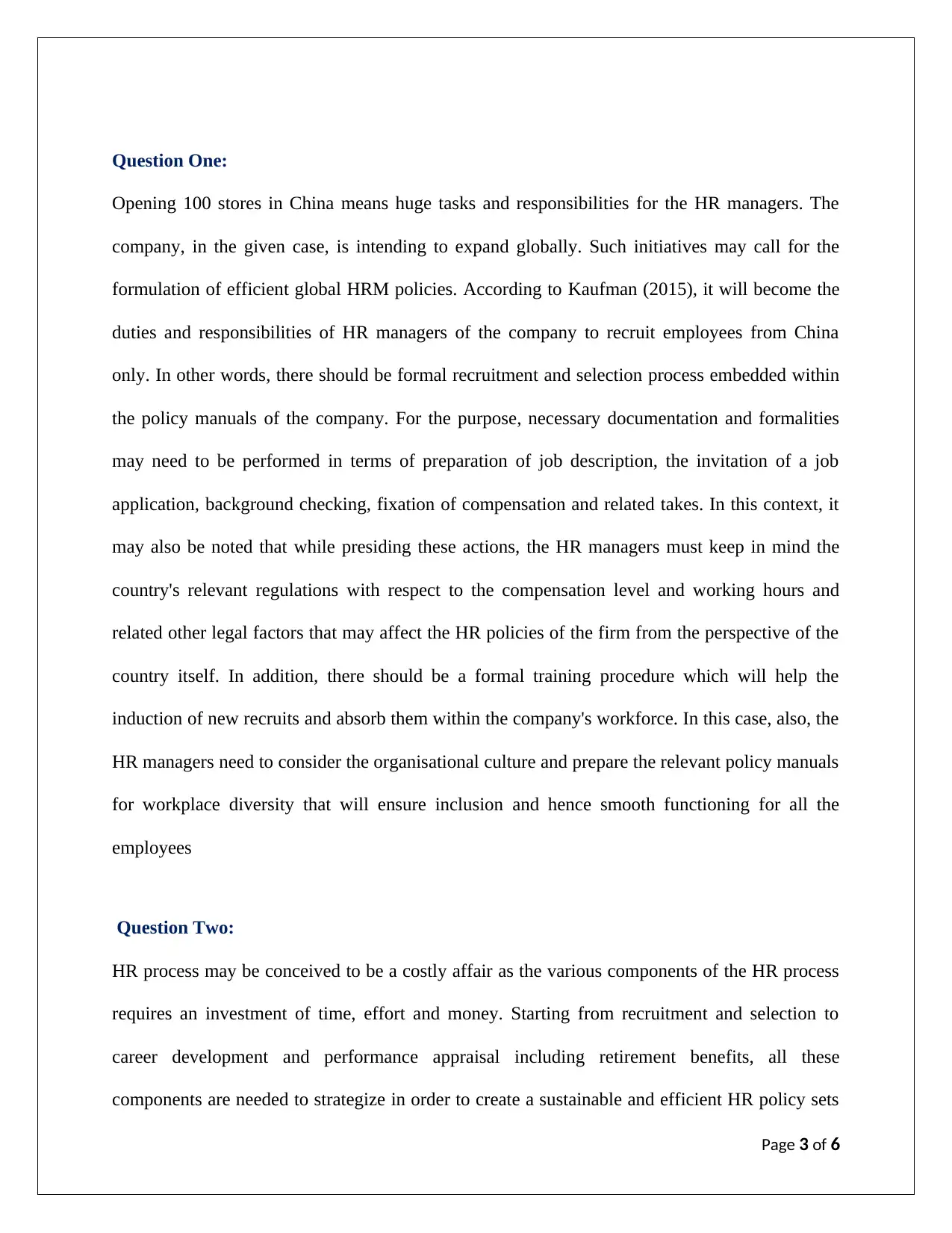
Question One:
Opening 100 stores in China means huge tasks and responsibilities for the HR managers. The
company, in the given case, is intending to expand globally. Such initiatives may call for the
formulation of efficient global HRM policies. According to Kaufman (2015), it will become the
duties and responsibilities of HR managers of the company to recruit employees from China
only. In other words, there should be formal recruitment and selection process embedded within
the policy manuals of the company. For the purpose, necessary documentation and formalities
may need to be performed in terms of preparation of job description, the invitation of a job
application, background checking, fixation of compensation and related takes. In this context, it
may also be noted that while presiding these actions, the HR managers must keep in mind the
country's relevant regulations with respect to the compensation level and working hours and
related other legal factors that may affect the HR policies of the firm from the perspective of the
country itself. In addition, there should be a formal training procedure which will help the
induction of new recruits and absorb them within the company's workforce. In this case, also, the
HR managers need to consider the organisational culture and prepare the relevant policy manuals
for workplace diversity that will ensure inclusion and hence smooth functioning for all the
employees
Question Two:
HR process may be conceived to be a costly affair as the various components of the HR process
requires an investment of time, effort and money. Starting from recruitment and selection to
career development and performance appraisal including retirement benefits, all these
components are needed to strategize in order to create a sustainable and efficient HR policy sets
Page 3 of 6
Opening 100 stores in China means huge tasks and responsibilities for the HR managers. The
company, in the given case, is intending to expand globally. Such initiatives may call for the
formulation of efficient global HRM policies. According to Kaufman (2015), it will become the
duties and responsibilities of HR managers of the company to recruit employees from China
only. In other words, there should be formal recruitment and selection process embedded within
the policy manuals of the company. For the purpose, necessary documentation and formalities
may need to be performed in terms of preparation of job description, the invitation of a job
application, background checking, fixation of compensation and related takes. In this context, it
may also be noted that while presiding these actions, the HR managers must keep in mind the
country's relevant regulations with respect to the compensation level and working hours and
related other legal factors that may affect the HR policies of the firm from the perspective of the
country itself. In addition, there should be a formal training procedure which will help the
induction of new recruits and absorb them within the company's workforce. In this case, also, the
HR managers need to consider the organisational culture and prepare the relevant policy manuals
for workplace diversity that will ensure inclusion and hence smooth functioning for all the
employees
Question Two:
HR process may be conceived to be a costly affair as the various components of the HR process
requires an investment of time, effort and money. Starting from recruitment and selection to
career development and performance appraisal including retirement benefits, all these
components are needed to strategize in order to create a sustainable and efficient HR policy sets
Page 3 of 6
⊘ This is a preview!⊘
Do you want full access?
Subscribe today to unlock all pages.

Trusted by 1+ million students worldwide
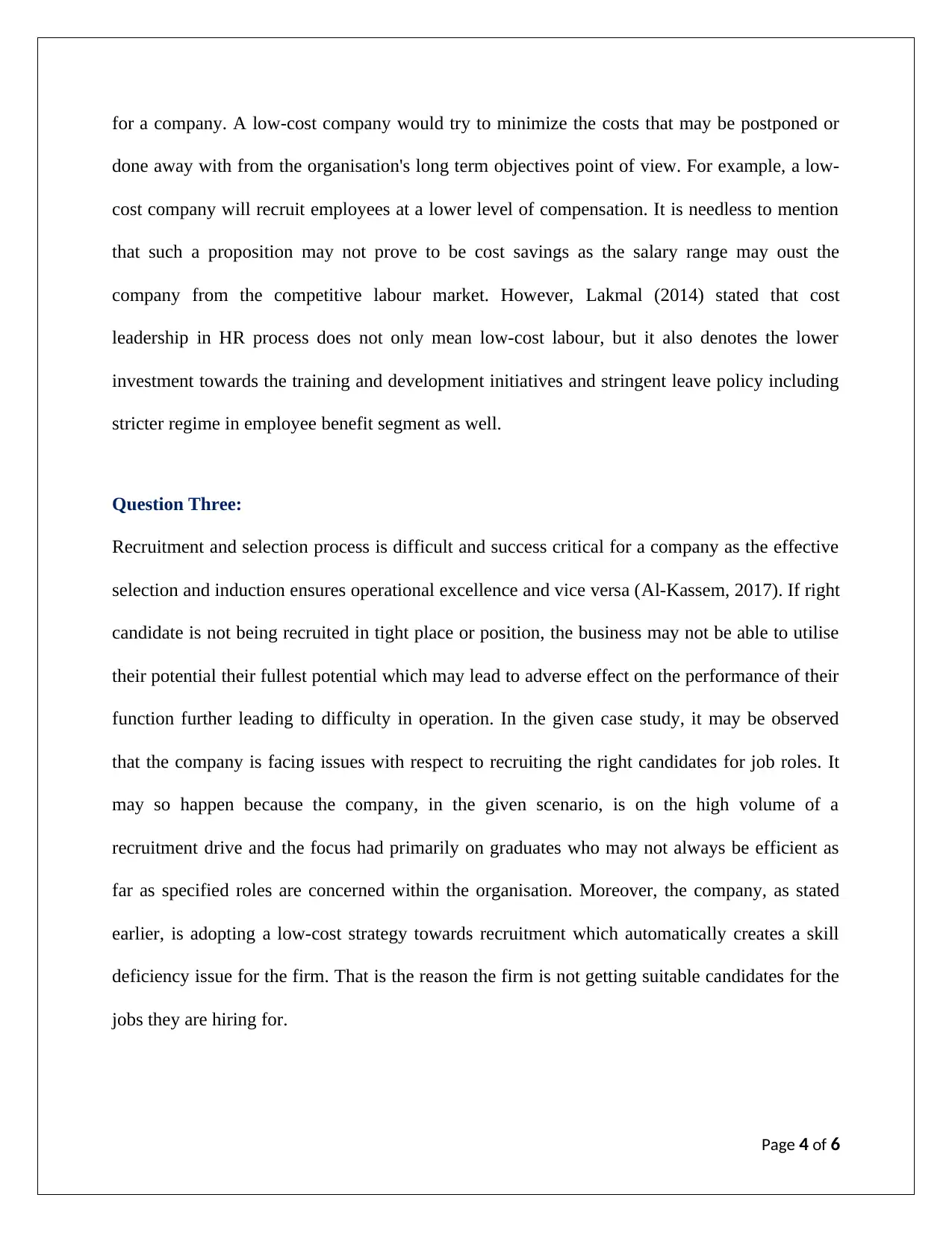
for a company. A low-cost company would try to minimize the costs that may be postponed or
done away with from the organisation's long term objectives point of view. For example, a low-
cost company will recruit employees at a lower level of compensation. It is needless to mention
that such a proposition may not prove to be cost savings as the salary range may oust the
company from the competitive labour market. However, Lakmal (2014) stated that cost
leadership in HR process does not only mean low-cost labour, but it also denotes the lower
investment towards the training and development initiatives and stringent leave policy including
stricter regime in employee benefit segment as well.
Question Three:
Recruitment and selection process is difficult and success critical for a company as the effective
selection and induction ensures operational excellence and vice versa (Al-Kassem, 2017). If right
candidate is not being recruited in tight place or position, the business may not be able to utilise
their potential their fullest potential which may lead to adverse effect on the performance of their
function further leading to difficulty in operation. In the given case study, it may be observed
that the company is facing issues with respect to recruiting the right candidates for job roles. It
may so happen because the company, in the given scenario, is on the high volume of a
recruitment drive and the focus had primarily on graduates who may not always be efficient as
far as specified roles are concerned within the organisation. Moreover, the company, as stated
earlier, is adopting a low-cost strategy towards recruitment which automatically creates a skill
deficiency issue for the firm. That is the reason the firm is not getting suitable candidates for the
jobs they are hiring for.
Page 4 of 6
done away with from the organisation's long term objectives point of view. For example, a low-
cost company will recruit employees at a lower level of compensation. It is needless to mention
that such a proposition may not prove to be cost savings as the salary range may oust the
company from the competitive labour market. However, Lakmal (2014) stated that cost
leadership in HR process does not only mean low-cost labour, but it also denotes the lower
investment towards the training and development initiatives and stringent leave policy including
stricter regime in employee benefit segment as well.
Question Three:
Recruitment and selection process is difficult and success critical for a company as the effective
selection and induction ensures operational excellence and vice versa (Al-Kassem, 2017). If right
candidate is not being recruited in tight place or position, the business may not be able to utilise
their potential their fullest potential which may lead to adverse effect on the performance of their
function further leading to difficulty in operation. In the given case study, it may be observed
that the company is facing issues with respect to recruiting the right candidates for job roles. It
may so happen because the company, in the given scenario, is on the high volume of a
recruitment drive and the focus had primarily on graduates who may not always be efficient as
far as specified roles are concerned within the organisation. Moreover, the company, as stated
earlier, is adopting a low-cost strategy towards recruitment which automatically creates a skill
deficiency issue for the firm. That is the reason the firm is not getting suitable candidates for the
jobs they are hiring for.
Page 4 of 6
Paraphrase This Document
Need a fresh take? Get an instant paraphrase of this document with our AI Paraphraser
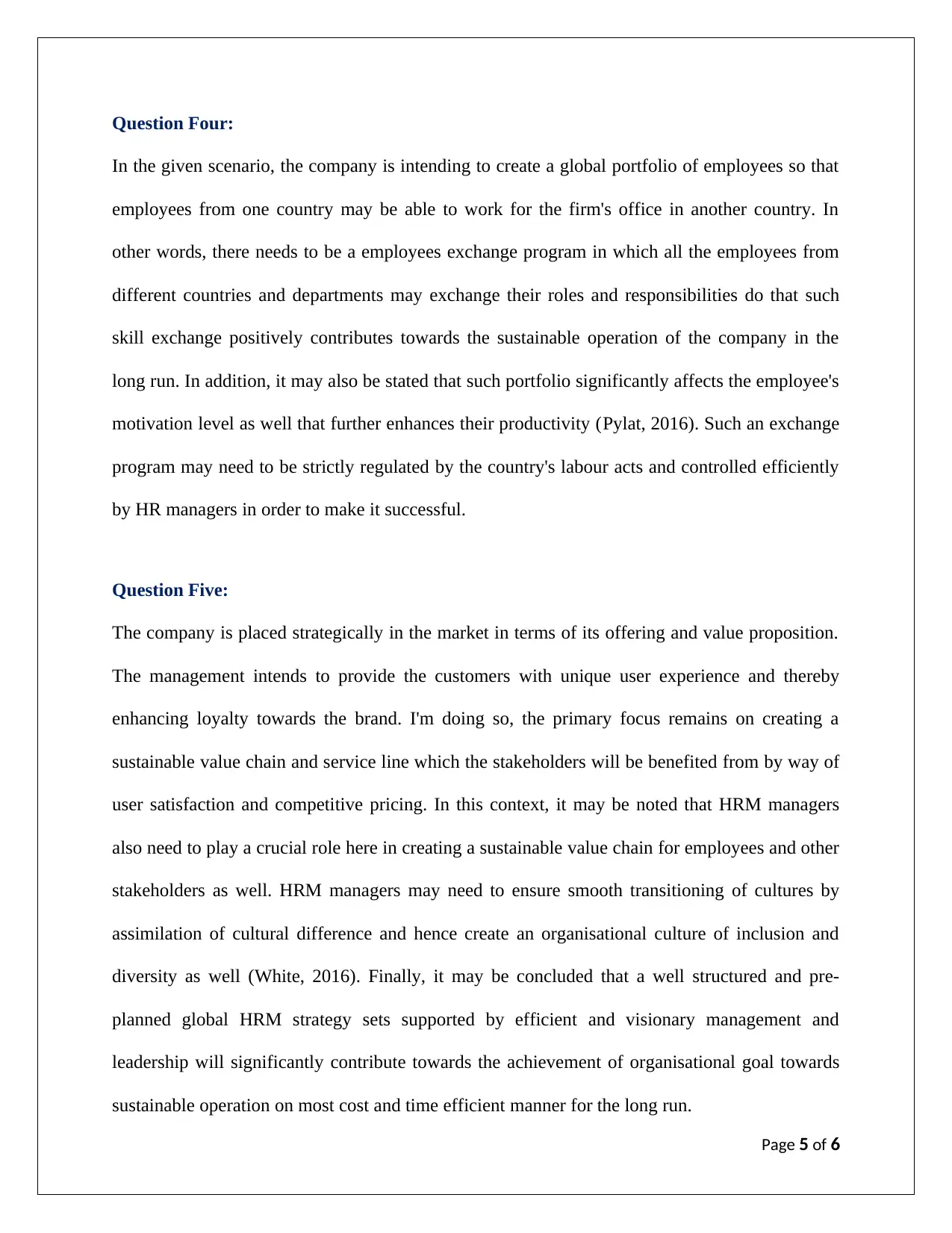
Question Four:
In the given scenario, the company is intending to create a global portfolio of employees so that
employees from one country may be able to work for the firm's office in another country. In
other words, there needs to be a employees exchange program in which all the employees from
different countries and departments may exchange their roles and responsibilities do that such
skill exchange positively contributes towards the sustainable operation of the company in the
long run. In addition, it may also be stated that such portfolio significantly affects the employee's
motivation level as well that further enhances their productivity (Pylat, 2016). Such an exchange
program may need to be strictly regulated by the country's labour acts and controlled efficiently
by HR managers in order to make it successful.
Question Five:
The company is placed strategically in the market in terms of its offering and value proposition.
The management intends to provide the customers with unique user experience and thereby
enhancing loyalty towards the brand. I'm doing so, the primary focus remains on creating a
sustainable value chain and service line which the stakeholders will be benefited from by way of
user satisfaction and competitive pricing. In this context, it may be noted that HRM managers
also need to play a crucial role here in creating a sustainable value chain for employees and other
stakeholders as well. HRM managers may need to ensure smooth transitioning of cultures by
assimilation of cultural difference and hence create an organisational culture of inclusion and
diversity as well (White, 2016). Finally, it may be concluded that a well structured and pre-
planned global HRM strategy sets supported by efficient and visionary management and
leadership will significantly contribute towards the achievement of organisational goal towards
sustainable operation on most cost and time efficient manner for the long run.
Page 5 of 6
In the given scenario, the company is intending to create a global portfolio of employees so that
employees from one country may be able to work for the firm's office in another country. In
other words, there needs to be a employees exchange program in which all the employees from
different countries and departments may exchange their roles and responsibilities do that such
skill exchange positively contributes towards the sustainable operation of the company in the
long run. In addition, it may also be stated that such portfolio significantly affects the employee's
motivation level as well that further enhances their productivity (Pylat, 2016). Such an exchange
program may need to be strictly regulated by the country's labour acts and controlled efficiently
by HR managers in order to make it successful.
Question Five:
The company is placed strategically in the market in terms of its offering and value proposition.
The management intends to provide the customers with unique user experience and thereby
enhancing loyalty towards the brand. I'm doing so, the primary focus remains on creating a
sustainable value chain and service line which the stakeholders will be benefited from by way of
user satisfaction and competitive pricing. In this context, it may be noted that HRM managers
also need to play a crucial role here in creating a sustainable value chain for employees and other
stakeholders as well. HRM managers may need to ensure smooth transitioning of cultures by
assimilation of cultural difference and hence create an organisational culture of inclusion and
diversity as well (White, 2016). Finally, it may be concluded that a well structured and pre-
planned global HRM strategy sets supported by efficient and visionary management and
leadership will significantly contribute towards the achievement of organisational goal towards
sustainable operation on most cost and time efficient manner for the long run.
Page 5 of 6
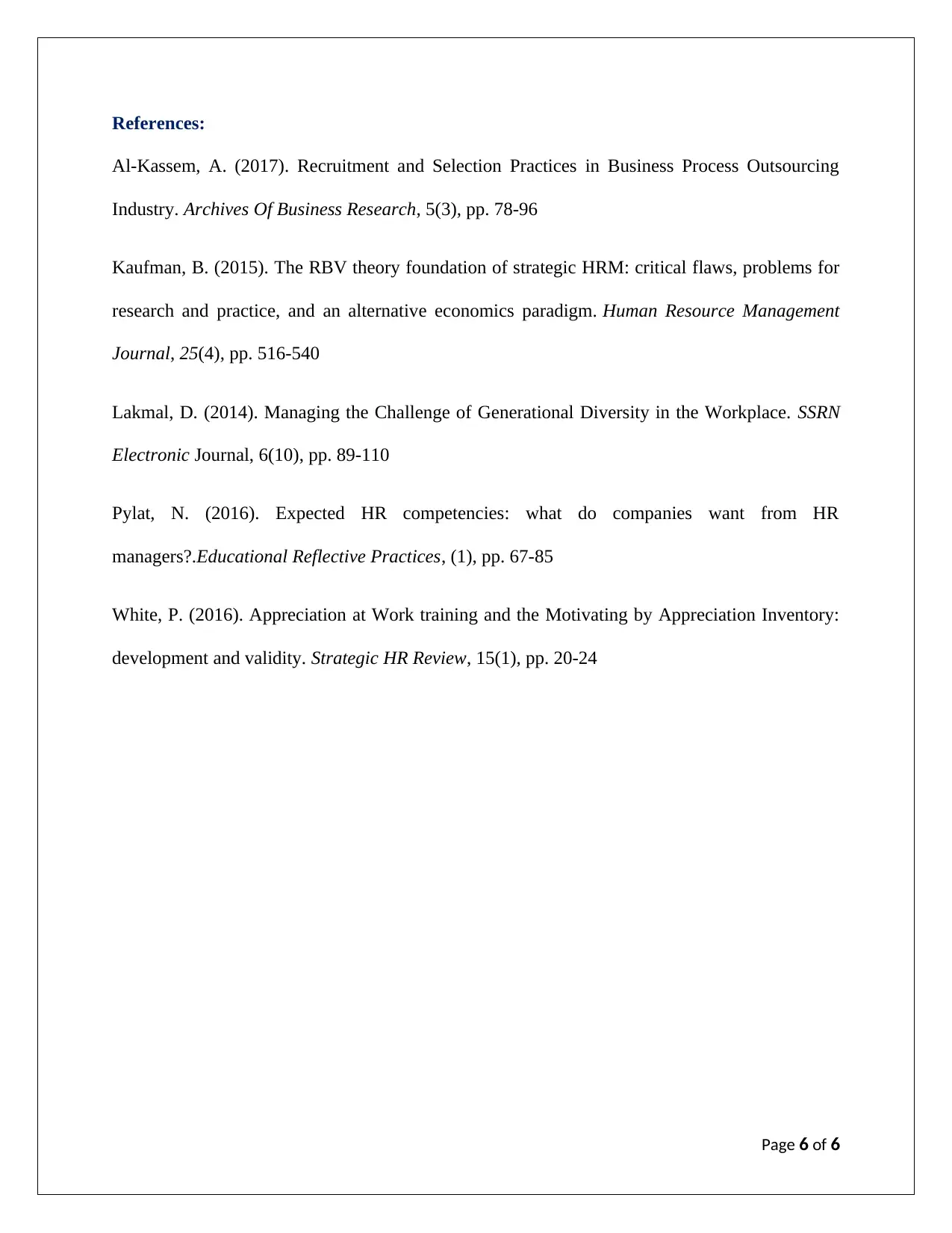
References:
Al-Kassem, A. (2017). Recruitment and Selection Practices in Business Process Outsourcing
Industry. Archives Of Business Research, 5(3), pp. 78-96
Kaufman, B. (2015). The RBV theory foundation of strategic HRM: critical flaws, problems for
research and practice, and an alternative economics paradigm. Human Resource Management
Journal, 25(4), pp. 516-540
Lakmal, D. (2014). Managing the Challenge of Generational Diversity in the Workplace. SSRN
Electronic Journal, 6(10), pp. 89-110
Pylat, N. (2016). Expected HR competencies: what do companies want from HR
managers?.Educational Reflective Practices, (1), pp. 67-85
White, P. (2016). Appreciation at Work training and the Motivating by Appreciation Inventory:
development and validity. Strategic HR Review, 15(1), pp. 20-24
Page 6 of 6
Al-Kassem, A. (2017). Recruitment and Selection Practices in Business Process Outsourcing
Industry. Archives Of Business Research, 5(3), pp. 78-96
Kaufman, B. (2015). The RBV theory foundation of strategic HRM: critical flaws, problems for
research and practice, and an alternative economics paradigm. Human Resource Management
Journal, 25(4), pp. 516-540
Lakmal, D. (2014). Managing the Challenge of Generational Diversity in the Workplace. SSRN
Electronic Journal, 6(10), pp. 89-110
Pylat, N. (2016). Expected HR competencies: what do companies want from HR
managers?.Educational Reflective Practices, (1), pp. 67-85
White, P. (2016). Appreciation at Work training and the Motivating by Appreciation Inventory:
development and validity. Strategic HR Review, 15(1), pp. 20-24
Page 6 of 6
⊘ This is a preview!⊘
Do you want full access?
Subscribe today to unlock all pages.

Trusted by 1+ million students worldwide
1 out of 6
Related Documents
Your All-in-One AI-Powered Toolkit for Academic Success.
+13062052269
info@desklib.com
Available 24*7 on WhatsApp / Email
![[object Object]](/_next/static/media/star-bottom.7253800d.svg)
Unlock your academic potential
Copyright © 2020–2025 A2Z Services. All Rights Reserved. Developed and managed by ZUCOL.





